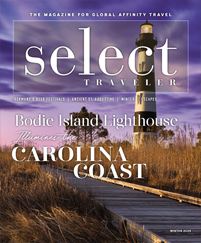For many group travelers, the most appealing part of travel is the opportunity to savor new flavors. Every destination offers its own fare, made distinctive by regionally procured ingredients and the local cultures that use them in unique ways.
That’s certainly true of five of the country’s best foodie cities: Albuquerque, New Mexico; Baltimore; New Orleans; Kansas City, Missouri; and Savannah, Georgia. In each, talented chefs are serving cuisine traditional to their areas in inventive ways, to the delight of residents and motorcoach visitors alike.
To sample the flavors of America, take your group to explore these culinary destinations.
Albuquerque
If group visitors want to order food in Albuquerque like a local, they should be prepared to answer one question: “Red or green?” The query is in reference to chili, which is made from either green or red chile peppers, the star ingredient in New Mexican cuisine.
“We put chili on pretty much everything we eat, from traditional dishes like enchiladas to fudge and pie to wine and beer,” said Brenna Moore, public relations and communications manager for Visit Albuquerque. “If you want both red and green chili on your plate, a good response is ‘Christmas.’ That’s what locals say if they want both.”
But fare in Albuquerque is unique for reasons beyond the beloved chili, according to Moore.
“Another reason New Mexican cuisine differs from others is due to the Spanish and Latino cultures, as well as Native American cultures, that have called the state home. They have the Three Sisters — that’s corn, beans and squash — and they call them that because of the way the crops are planted. They help one another out to grow, so they are very intertwined. You’ll see corn, beans and squash in almost every traditional New Mexican dish.”
Groups that want to sample classic Albuquerque cookery can head to El Pinto. The largest restaurant in the Southwest, it was founded in 1962 by twin brothers and is still going strong. The Church Street Cafe, in one of the oldest buildings in the city, offers a large patio that groups will love, and the Indian Pueblo Cultural Center just opened an innovative teaching kitchen focused on what Moore called “the exploration of indigenous cuisine.”
Baltimore
Baltimore is synonymous with great seafood, and for good reason. Its location on the Patapsco River, mere miles from the Chesapeake Bay, means that the city has easy access to the freshest, finest crabs and oysters anywhere. Among the most famed restaurants that serve up the Bay’s bounty to groups are Phillips Seafood and the Rusty Scupper, both with locations in the Inner Harbor.
“What I suggest for groups a lot of times is a crab experience,” said Rich Gilbert, travel trade sales manager for Visit Maryland. “Each person gets two or three crabs, and somebody shows them how they open them. Then they give them a platter with a crab cake and corn on the cob, maybe a piece of chicken and coleslaw, so they kind of vary it a little bit.”
Other Baltimore restaurants that welcome groups include McCormick and Schmick’s Seafood and Steaks, also on the Inner Harbor; Bo Brooks Crabhouse, a casual fine dining eatery at Lighthouse Point in Camden; Captain James Seafood Palace; and Nick’s Fish House. All are part of Maryland’s Crab and Oyster Trail, which ranges throughout the state. Baltimore coddies, a sandwich made of mashed and salted codfish, should be sampled at Faidley’s Seafood in Lexington Market, with a cold Natty Boh beer, which originated in Baltimore.
Speaking of beer, the Waverly Brewing Company produces a local oyster stout, dosed with shells and real meat from Maryland oysters. The company welcomes groups to its brewing production or galley spaces, with brewery tours upon request. And should group visitors not get enough of celebrated Old Bay seasoning with their seafood, Gilbert suggests a stop at one of Charmery’s two Baltimore locations for a taste of Old Bay Caramel ice cream.
New Orleans
Ask any native of New Orleans what the term Creole means, and you could well get a different answer from person to person. The definition of Cajun is less complicated: It is an ethnic group descended from Acadian French settlers exiled from northeastern Canada who sought refuge in Louisiana in the 1600s. “Creole,” however, can be used to describe anyone with European, Caribbean, African or Hispanic ancestry, or simply people born in southern Louisiana with Spanish or French heritage.
To muddle matters, Cajun and Creole cuisine is similar. Both cultures serve famed Louisianian fare like gumbo and jambalaya and liberally employ chopped onions, green peppers and celery in cooking.
Cajun fare, however, tends toward heartier, more meatcentric dishes — the spicy pork sausage boudin is a favorite. Creole food centers around rich sauces, with locally caught seafood as primary ingredients. But, according to Thu Tran, senior account executive for New Orleans and Company, “the best way to explain the difference between the two is that Creole cuisine uses tomatoes, and Cajun does not.”
Both cooking styles feature prominently in New Orleans’ foodscape. Groups can fill their bellies on Cajun or Creole dishes at celebrated French Quarter restaurants like the Court of Two Sisters, which boasts a beautiful courtyard with live music during the week; Cornet, which offers balconies overlooking Bourbon Street; and the Palace Café, where favorites are served with a modern flair. Tour planners might also want to schedule a stop at the New Orleans School of Cooking.
“They have a full schedule with many options — demonstrations, classes, tastings,” said Tran. “The chefs are local historians with so many stories to tell. You feel like you’re in Grandma’s kitchen.”
Kansas City
If there’s a barbecue capital of the world, Kansas City, Missouri, just might be it. The midwestern burg boasts more than 100 restaurants that are dedicated to perfecting the special K.C. style of barbecue, which is smothered in sweet and spicy molasses-based sauce and cooked on low heat, slowly. Beef brisket is extremely popular in Kansas City, as are burnt ends. “They are the crispy and juicy pieces of meat from the end of a slab of meat,” said Derek Klaus, director of communications for Visit KC.
“They originated as a free giveaway item over the counter at Arthur Bryant’s decades ago, but now they’re a staple at most barbecue joints here. Burnt ends are the quintessential Kansas City barbecue item.”
Kansas City barbecue got its start around a century ago when Henry Perry, the man who would come to be known as the godfather of the city’s barbecuing scene, began selling smoked meat out of a boxcar. According to Klaus, he went on to mentor Arthur Bryant and George Gates, who became barbecuing legends in their own right. Today, Arthur Bryant’s Barbeque and Gates Bar-B-Q remain two of the most popular barbecue purveyors in the city, with Gates featuring large banquet areas that work well for group dining. Fiorella’s Jack Stack Barbecue, a local favorite as well, is also a good bet for groups.
For groups that prefer to sample fare at several iconic barbecue eateries, Klaus suggests booking a jaunt through KC Barbecue Tours.
“We’ve had them service motorcoaches of up to 60,” he said. “You’ll stop at three or four places, get a small bite at each one and learn about the history of barbecue here. It’s great.”
Savannah
Like New Orleans, where Creole and Cajun fare meet, Savannah offers foodies two similar but distinct cuisines to relish: coastal and Southern. Coastal, according to Erica Backus, director of public relations for Visit Savannah, is “anything that is plenty and bountiful for our region.”
“A lot of foods that are very water dependent — like corn, tomatoes and rice — were grown in abundance in the area, and now they make up the base of many of the popular dishes we see today,” she said. “And that is accompanied with everything that comes from the sea.”
Meanwhile, Southern food has its roots in the vegetables, including collard greens and okra, and preparation methods — frying — that enslaved Africans brought with them to this country.
“Frying was typically done outdoors, so you weren’t heating up a house, and it could be done quickly to feed a multitude,” Backus said. “To me, the idea of a good Southern dinner or lunch is fried chicken, cornbread or biscuits, collard greens, rice, okra, tomatoes, corn on the cob, macaroni and cheese and, of course, peach cobbler or banana cream pudding for dessert.”
Groups looking to nosh on everything from seafood to fried chicken might want to pay a visit to the Pirate’s House, which is in one of Georgia’s oldest buildings. The Good Times Jazz Bar and Restaurant is a Black-owned, chef-driven eatery that dishes up Southern and soul food dishes; Savannah Riverboat Cruises, which sails up and down the Savannah River, serves a Southern buffet that Backus called “fantastic.”
“There’s also the Savannah Taste Experience,” she said. “They’re good for groups; it gives you an opportunity to try seven or eight different restaurants as you walk through the city.”









